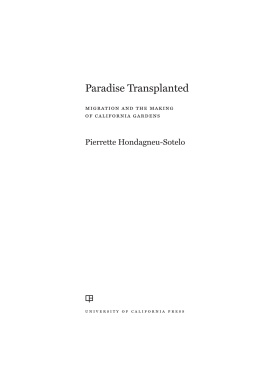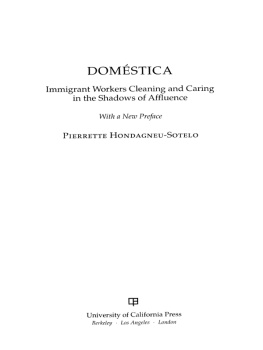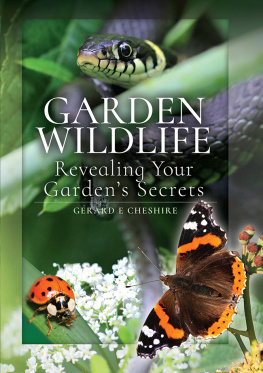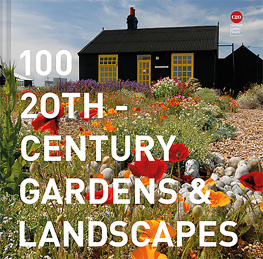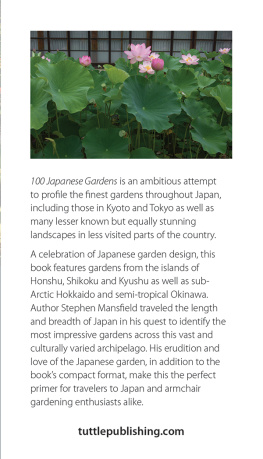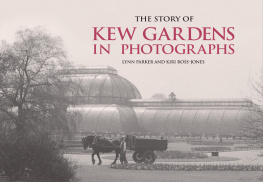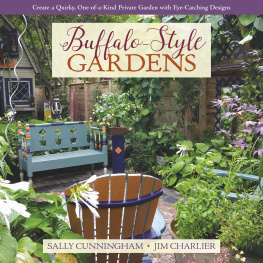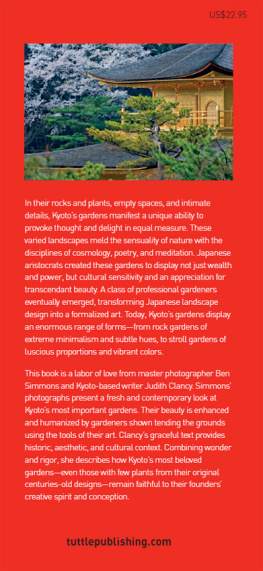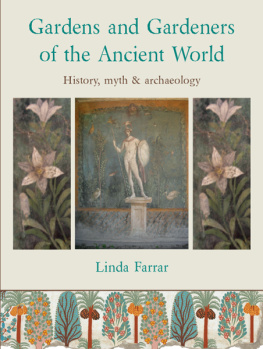Preface and Acknowledgments
I wrote this book because I love gardens and I wanted to understand how migration and immigrants have shaped the beautiful garden landscapes of Southern California. By necessity, gardens are place based and so is this study, but the boundaries of what we can learn from this story are broader. The majority of the worlds population now lives in cities and metropolitan regions and includes diverse groups of people who have migrated from different countries. How newcomers get along with old-timers is one of the key dramas now unfolding in metropolitan regions around the nation and the globe, and how we all engage with soil, plants, and water will determine the ecological viability of the planet. Gardens offer places to see these processes unfold.
Gardens are immobile, literally rooted in the earth, but they are shaped by the transnational swirl of ideas and practices, people, plants, and seeds, and in turn, gardens shape our experiences of cities and suburbs. This is perhaps nowhere as profoundly true as in Southern California, where successive migrations have defined the landscape. In this book, I reconstruct this history, and I focus on contemporary immigrants from different nations and across the spectrum of social class, examining how they are shaping metropolitan gardens. It is tempting to see gardens as little havens roped off from the public world, but I show that they are not separate from society. Gardens are embedded in complex social hierarchies and contestations over power and resources, and they simultaneously express basic human yearnings for transcendence, beauty, and belonging.
A rich array of gardens have flourished for eons in different corners of the world, but private residential gardens have predominated in Southern California, where developers and governments did not invest in the development of public parks as they did in other cities. I examine private residential gardens, but I also consider the social dynamics at the most renowned botanical garden and plant collection in the West, the Huntington, which began as the private residential estate garden of a wealthy industrialist, and I look at urban community gardens, which today substitute as backyards for marginalized immigrant laborers who live in crowded, often substandard apartments. From the wealthiest elites to some of the most disenfranchised inner-city residents and to those in between, gardens offer sources of meaning and fleeting moments of connection to the natural world.
To write this book, I tried to get as close as possible to these varied gardens in Southern California in order to capture the viewpoints, experiences, and practices of diverse people (but especially immigrants) engaged with them. Although I am a sociologist with a central interest in understanding how our positions in social groups affect our engagements with gardens, my approach has been influenced by reading in neighboring academic disciplines of history, urban planning, geography, and landscape studies. To gather data for this book, I relied on participant observation, in-depth interviews, and historical analysis, research methods that I describe more fully in chapter 1. Since this type of research is contingent on my own social location, its important for me to share a bit about my own life and relationship to gardens.
First, Ive become one of those middle-class, middle-aged women obsessed with gardens. My modest-sized backyard has been featured on a local garden tour (twice), and I once received a Golden Arrow Award for planting my front yard with drought-tolerant plants, mostly sculptural succulents and grassy plants. Its quite messy lookingit doesnt look Golden Arrow worthybut in fact, Ive worked very hard at it. Like many amateur gardeners, Im inordinately proud of my gardenMy garden kicks ass is the proclamation on my refrigerator magnet. But Ive killed many fledgling seedlings, and Ive planted so many trees and shrubs that I have now accidentally created a mass of shade in the backyard, limiting my future planting prospects. Its a humbling experience. As my friends know, I relish any opportunity to visit a garden, small or grand, and every spring my favorite form of conspicuous leisure is going on garden tours, strolling and peering in strangers backyards. My local favorites are the Theodore Payne Foundation Native Plant Garden Tour and the Venice Garden Tour, where so many artists and architects have created wildly imaginative gardens. On these visits Im routinely struck with garden envy (and then some guilt), but I also get ideas about what I might try next in my garden. I regularly plant, prune, and pull weeds, but Im also grateful for the help of my sons, Miles and Sasha, who have shoveled through tough clay, carted heavy sacks of soil amendment, and transplanted stubbornly root-bound potted succulents for me. I also get regular help from immigrant gardeners who arrive weekly to blow out leaves and from my husband Mike, who will trim the bamboo. Gardens are sponges for labor, and it takes constant work to keep even a modest-sized garden.
I was raised in the San Francisco Bay Area by immigrant parents who came from different continents, my mother from the central valley of Chile, an agricultural area now developed into a mini-Napa and global exporter of fruits, and my father from the French Pyrenees. For both of them, growing up on small family farms had meant hard work, deprivation, and modest schooling. Migration routes to the city and ultimately the United States allowed them to replace the isolation and hardship of rural peasant life with creature comforts in suburban California. Neither of them ever longed to go back to the land, and we certainly didnt know anyone who had a country house. But on summer weekends, my father and his brothers, all of whom worked as French gardeners for upscale clients, tended their own backyard gardens and traded homegrown Pyrenees-style peppers in brown paper bags, a ritual that connected them to each other and to their collective past.

